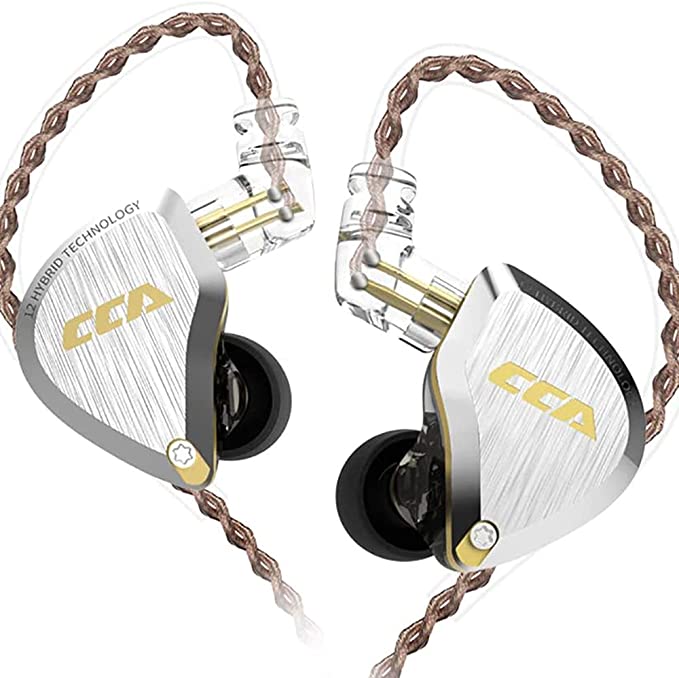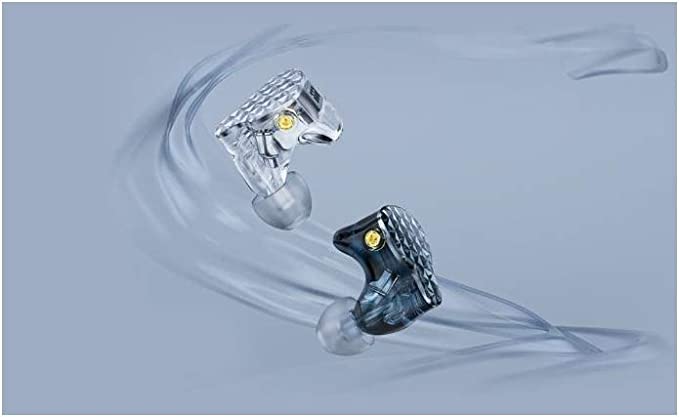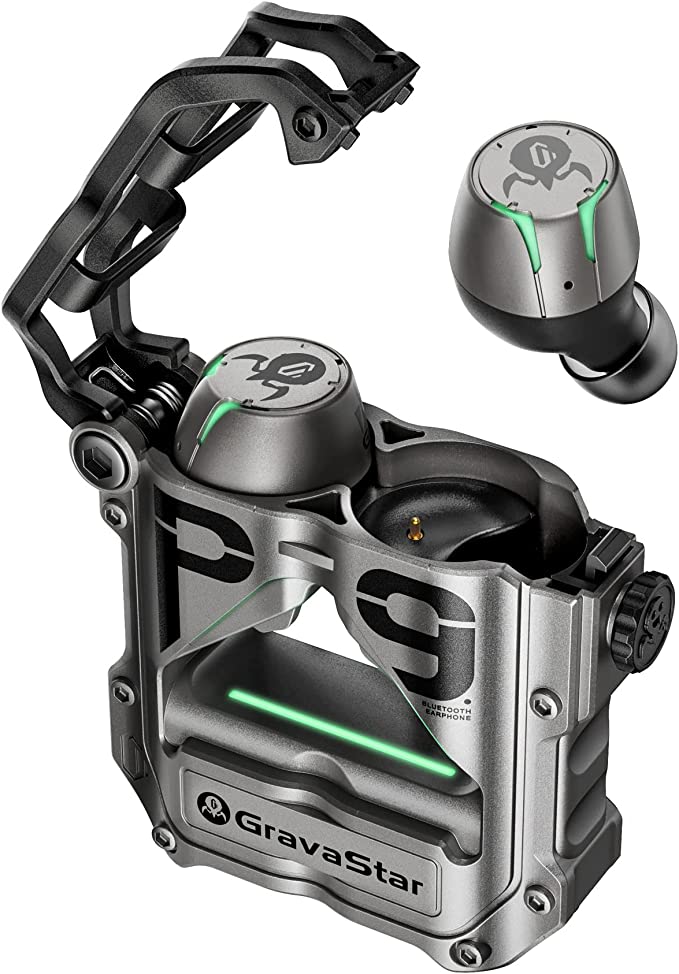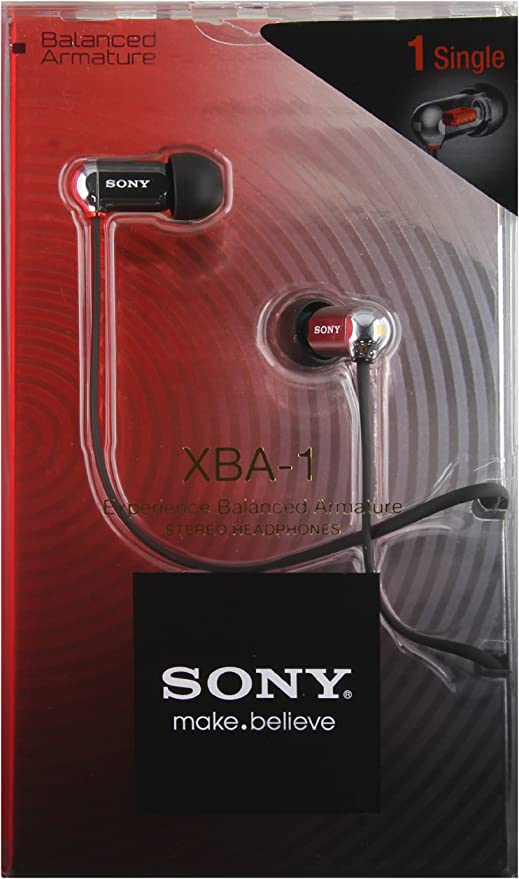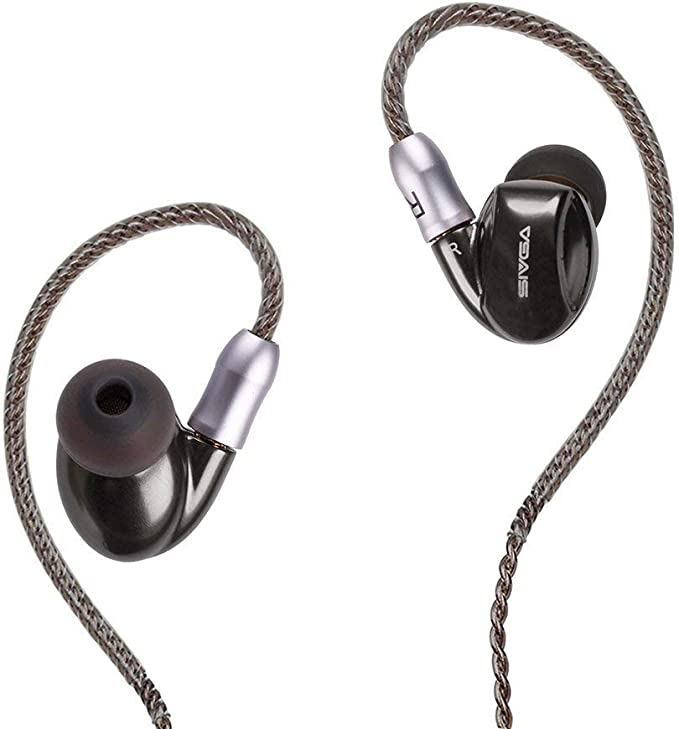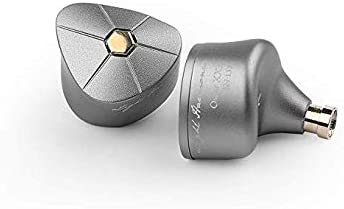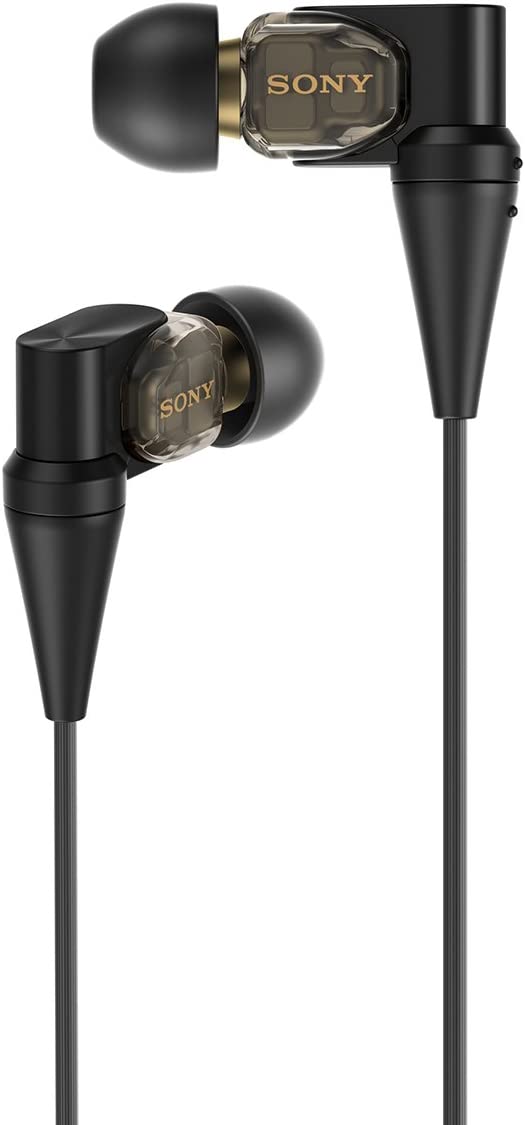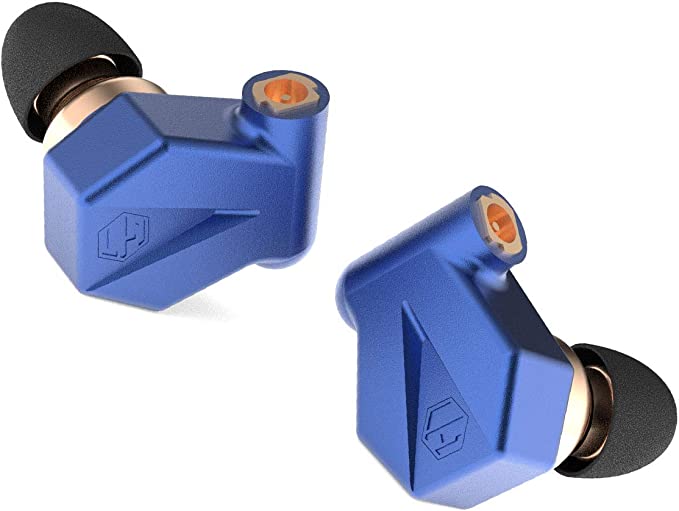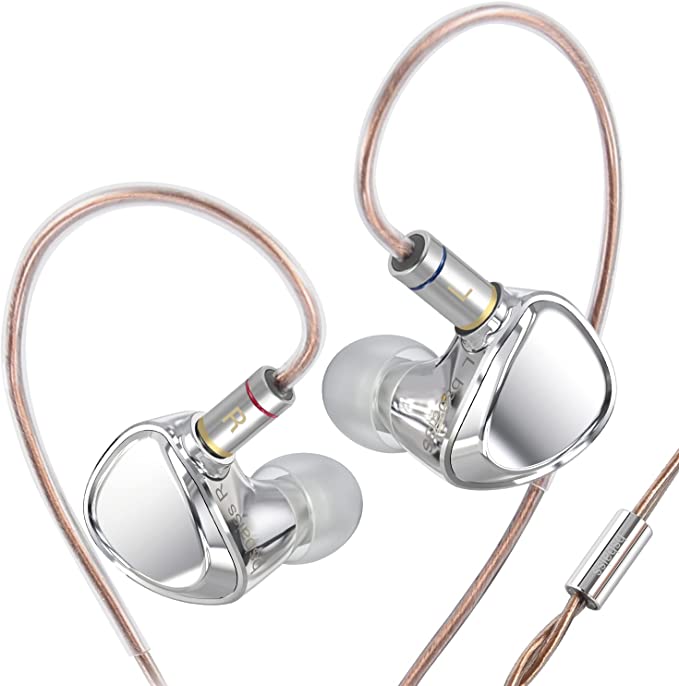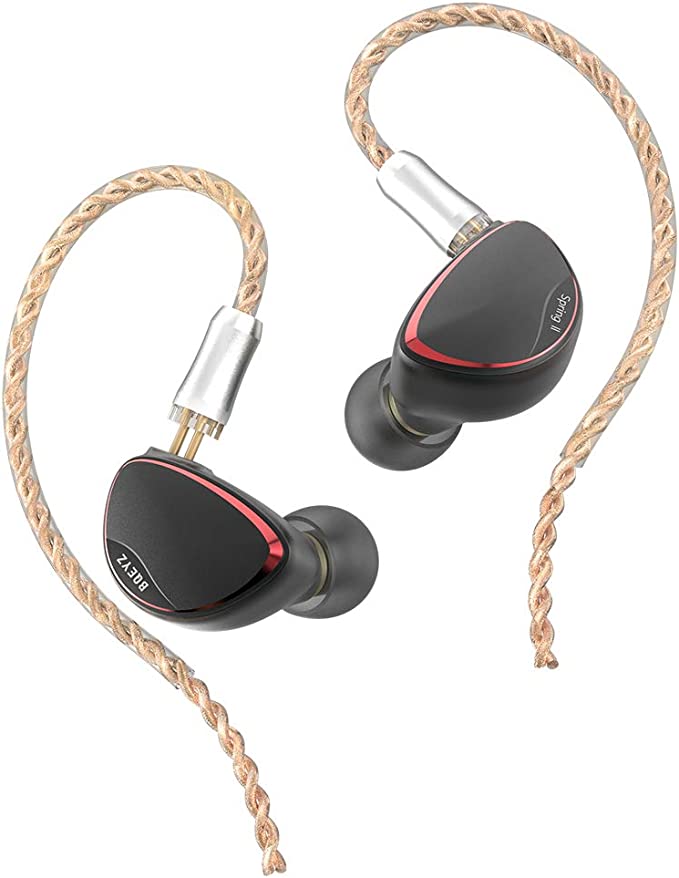The Art of the Hybrid: Deconstructing the Science of Multi-Driver In-Ear Monitors
Update on Nov. 14, 2025, 4:23 p.m.
The pursuit of perfect sound is a journey into the heart of physics and engineering. For decades, the fundamental challenge of headphone design has been a battle against a simple, inconvenient truth: it is incredibly difficult for a single, small speaker to faithfully reproduce the entire spectrum of human hearing. A single driver tasked with creating the deep rumble of a sub-bass, the rich texture of a human voice, and the delicate shimmer of a cymbal often has to make compromises.
In response to this challenge, a sophisticated school of audio engineering emerged, particularly in the world of professional in-ear monitors (IEMs). This approach treats the earphone not as a single speaker, but as a miniature, multi-speaker sound system. This is the world of the hybrid driver earbud. To understand this leap in audio fidelity, we must dissect the technology from its first principles, exploring how different types of “sonic specialists” are orchestrated to create a cohesive and detailed whole. Let’s use the specified architecture of a professional IEM, like the SIVGA SM002, as our blueprint for this exploration.

The Two Classes of Musician: Dynamic vs. Balanced Armature Drivers
At the core of any hybrid IEM is the combination of at least two fundamentally different types of drivers. Think of them as different sections of an orchestra, each optimized for a specific role.
1. The Dynamic Driver (DD): The Bass and Cello Section
The dynamic driver is the traditional workhorse of the headphone world. It operates on a principle of electromagnetism, much like a classic loudspeaker: a voice coil attached to a cone-like diaphragm moves within a magnetic field, pushing air to create sound.
- Strength: Its primary advantage lies in its ability to move a significant amount of air. This makes it exceptionally well-suited for reproducing low-frequency sounds. The “full and thick” bass and warm, natural-sounding midrange that audiophiles cherish are often the domain of a well-made dynamic driver.
- Material Science in Action: The performance of a DD is heavily influenced by its diaphragm material. The SM002, for instance, specifies a PEEK (Polyetheretherketone) film. PEEK is an advanced polymer known for its high stiffness-to-weight ratio and excellent damping properties. For a driver, this means the diaphragm can move with speed and precision (for clear, punchy bass) and stop just as quickly without residual vibration (preventing a “boomy” or muddy sound).
2. The Balanced Armature (BA) Driver: The Violins and Flutes
Originally pioneered for the hearing aid industry where clarity and efficiency were paramount, the balanced armature driver operates on a different principle. A tiny reed (the armature) is balanced between two magnets and surrounded by a coil. The audio signal causes this reed to vibrate, and these micro-vibrations are transferred to a stiff diaphragm.
- Strength: BA drivers are incredibly small, efficient, and fast. Because their moving parts have very little mass, they can respond to the finest details and fastest transients in an audio signal with astonishing precision. They excel at reproducing the crisp, intricate details of high-frequency sounds—the decay of a hi-hat, the subtle breath of a vocalist, the texture of a guitar string. This is why multi-BA setups are prized for their “high resolution” and ability to reveal layers of detail in a recording that a single dynamic driver might miss.
The Conductor: The Invisible Magic of the Crossover
Simply placing a dynamic driver and a balanced armature driver in the same shell would result in an incoherent sonic mess. This is where the most critical, yet invisible, component of a hybrid system comes into play: the acoustic crossover network.
The crossover is an electronic circuit of capacitors and inductors that acts as a sophisticated traffic cop for the audio signal. It splits the incoming full-range signal into different frequency bands. In a hybrid system like the “1 DD + 2 BA” configuration of the SM002, the crossover would intelligently: * Send the low frequencies (bass and lower-mids) exclusively to the dynamic driver. * Send the high frequencies (upper-mids and treble) exclusively to the balanced armature drivers.
This division of labor ensures that each driver operates only in its “sweet spot,” the frequency range where it is most efficient and accurate. This prevents distortion, improves clarity, and creates a seamless, cohesive sound where the transition between the bass-focused DD and the detail-oriented BAs is imperceptible. It is the art of the crossover design that truly defines the quality of a hybrid IEM.

Tuning the Hall: The Science of Interchangeable Nozzles
Beyond the drivers themselves, high-definition IEMs often offer another layer of customization: physical acoustic tuning. The SIVGA SM002’s design includes three sets of interchangeable nozzles (Silver for Bass, Gunmetal for Balanced, Black for Treble/Midrange). This feature transforms the user from a passive listener into an active participant in shaping the final sound.
These nozzles are not merely cosmetic. They function as passive acoustic filters. The length, bore diameter, and any internal damping material of the nozzle alter the acoustic impedance of the path the sound wave travels from the drivers to your ear. * A bass-focused nozzle might use a wider bore or specific damping to allow low-frequency waves to propagate with more energy. * A treble-focused nozzle might use a narrower bore to create a Helmholtz resonance effect that subtly accentuates certain high frequencies, enhancing the sense of clarity and “air.” * A balanced nozzle is engineered to be as acoustically transparent as possible, presenting the sound as the crossover network intended, with minimal coloration.
This feature is a direct acknowledgment that “perfect sound” is subjective and genre-dependent. The ability to switch from a bass-heavy signature for rock to a detail-forward one for jazz gives the listener a level of control previously reserved for a studio engineer’s mixing desk.
The Final Connection: Cables and the Ergonomic Seal
The final links in the high-fidelity chain are the physical connections. The use of detachable MMCX cables is a hallmark of professional-grade IEMs. This provides crucial modularity: damaged cables can be replaced without discarding the entire earphone, and enthusiasts can upgrade to different cable materials to experiment with subtle sonic and ergonomic differences.
Equally critical is the final ergonomic seal provided by the eartips. The provision of multiple types and sizes—silicone, double-flange silicone, and sponge (foam)—is essential. The eartip is the final acoustic seal, and achieving a perfect fit is non-negotiable for two reasons: it physically blocks external noise (passive noise cancellation) and it creates the sealed chamber necessary for impactful bass response.
Conclusion: An Orchestra in Your Ear
Deconstructing a hybrid multi-driver IEM reveals a microcosm of a full-scale sound system, meticulously engineered to perform within the tiny confines of an earbud shell. It is a symphony of specialized drivers, invisible electronic crossovers, and tunable acoustic chambers, all working in concert.
While the SIVGA SM002, with its specific combination of drivers and tunable nozzles, remains an intriguing design concept without market feedback, its architecture serves as a perfect illustration of the principles that drive the high-fidelity audio industry. It showcases the relentless pursuit of a sound that is not just heard, but felt—a sound that is detailed, dynamic, and true to the artist’s original vision. For anyone on the quest for better audio, understanding this “art of the hybrid” is the first step toward appreciating the incredible science of sound.

